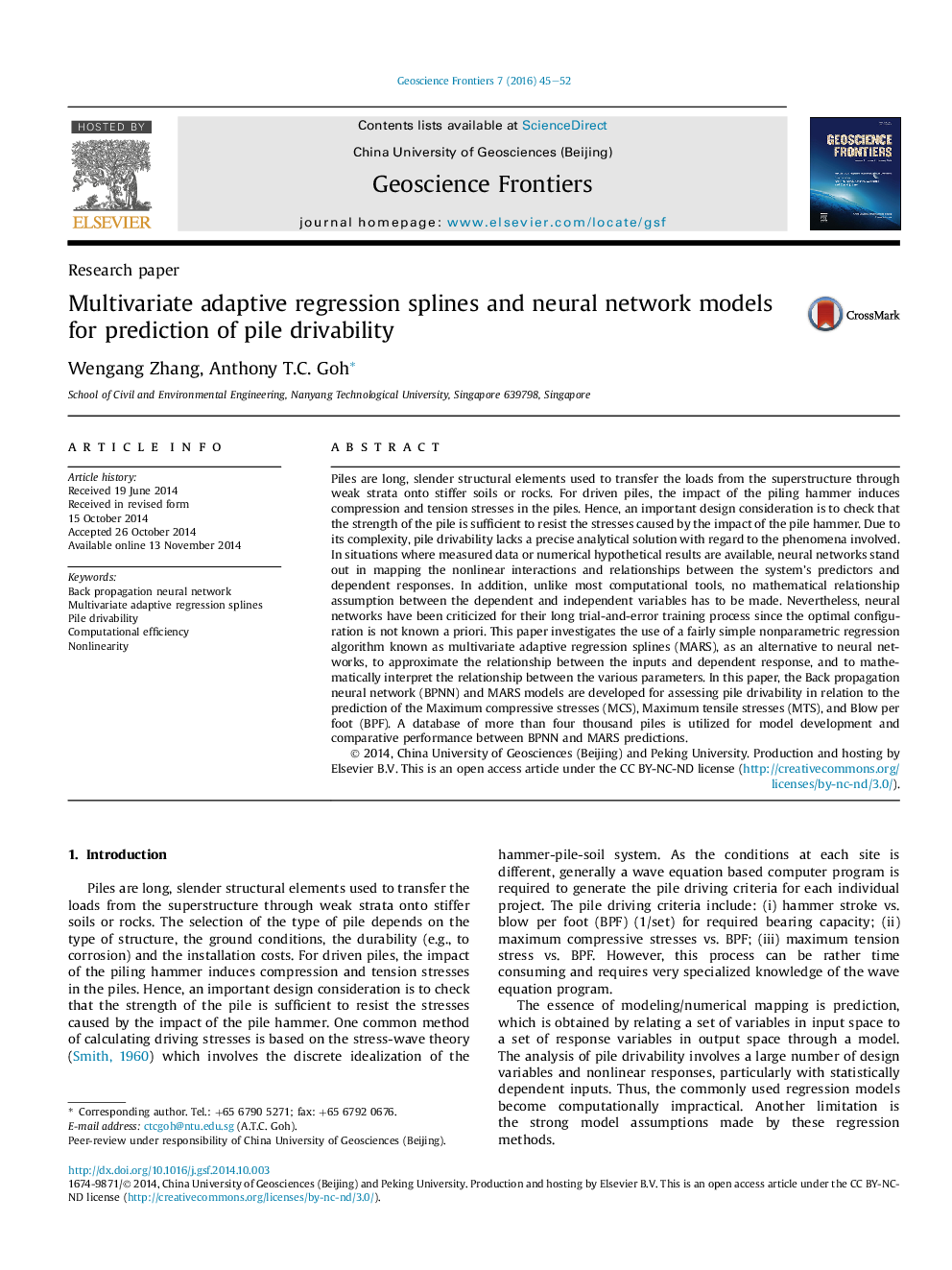| کد مقاله | کد نشریه | سال انتشار | مقاله انگلیسی | نسخه تمام متن |
|---|---|---|---|---|
| 4681521 | 1348855 | 2016 | 8 صفحه PDF | دانلود رایگان |
• Pile drivability models by both MARS and BPNN are presented.
• Comprehensive comparison between MARS and BPNN in terms of modeling accuracy and computational efficiency etc.
• MARS outperforms BPNN in computational efficiency and model interpretability.
Piles are long, slender structural elements used to transfer the loads from the superstructure through weak strata onto stiffer soils or rocks. For driven piles, the impact of the piling hammer induces compression and tension stresses in the piles. Hence, an important design consideration is to check that the strength of the pile is sufficient to resist the stresses caused by the impact of the pile hammer. Due to its complexity, pile drivability lacks a precise analytical solution with regard to the phenomena involved. In situations where measured data or numerical hypothetical results are available, neural networks stand out in mapping the nonlinear interactions and relationships between the system's predictors and dependent responses. In addition, unlike most computational tools, no mathematical relationship assumption between the dependent and independent variables has to be made. Nevertheless, neural networks have been criticized for their long trial-and-error training process since the optimal configuration is not known a priori. This paper investigates the use of a fairly simple nonparametric regression algorithm known as multivariate adaptive regression splines (MARS), as an alternative to neural networks, to approximate the relationship between the inputs and dependent response, and to mathematically interpret the relationship between the various parameters. In this paper, the Back propagation neural network (BPNN) and MARS models are developed for assessing pile drivability in relation to the prediction of the Maximum compressive stresses (MCS), Maximum tensile stresses (MTS), and Blow per foot (BPF). A database of more than four thousand piles is utilized for model development and comparative performance between BPNN and MARS predictions.
Figure optionsDownload as PowerPoint slide
Journal: Geoscience Frontiers - Volume 7, Issue 1, January 2016, Pages 45–52
